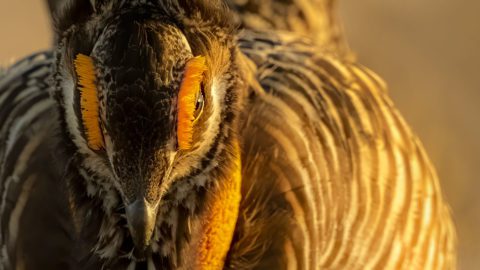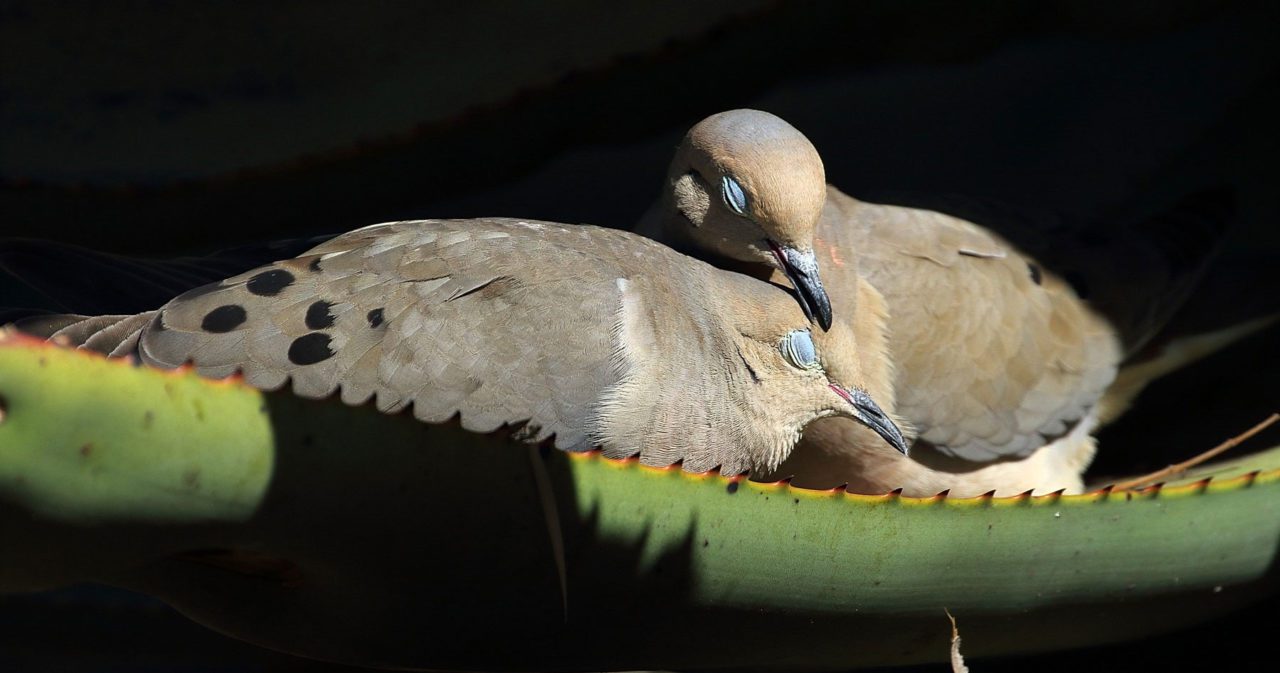How Do Birds “Fall in Love”? A Look at Courtship Displays
By Marc Devokaitis
Trumpeter Swans by Teri Franzen via Birdshare. February 6, 2020From the Spring 2020 issue of Living Bird magazine. Subscribe now.
Disclaimer: Birds form pair bonds for a variety of reasons, and whether they fall in love or not is more a question for philosophers than scientists. So in the following Valentine-themed piece, please understand our references to affection and emotion are in fun, and take them with a grain of salt (or chocolate).
When birds hook up, their partnerships can take many forms. Some, such as penguins and albatrosses, form lifelong bonds that can last decades. Other species stick together for only one or a couple of seasons. And then there are groups—such as grouse, hummingbirds, and the astounding birds-of-paradise—where pair bonds often don’t exist at all, and males have no role in raising the young. Nevertheless, in all these relationships, male and female birds need to attract and select suitable mates, and they need to know when the time is right to consummate their relationship—a harder task for birds than one might think.
“Sex is the furthest thing from a bird’s mind for most of the year,” says online education specialist Kevin McGowan, who creates and teaches courses about bird behavior for the Cornell Lab’s Bird Academy. “During the winter, most birds’ sexual organs shrink, so in the spring they need to get bigger again. Longer day length triggers the hormones that enable the testes and the ovaries to grow and resume functioning. And as this happens, courtship behaviors actually help stimulate the physical changes that get them ready for action.”
Courtship behavior can include things like food delivery, dance moves (displays), and mutual preening. In many cases, the most extravagant courtship displays belong to the species where males contribute little else to the relationship—think strutting grouse or dancing birds-of-paradise. But long-term partners also have suites of moves and calls that help male and female reestablish their relationship after often spending a winter apart from each other. An example is the bouncing, bill-rattling, and “sky-pointing” of Laysan Albatrosses. They can be birds’ way of saying “let’s stay together” or “tonight’s the night!”
A spectacular example of courtship behavior comes from Western Grebes. The males and females execute a seemingly choreographed duet dance that culminates in a coordinated rushing display in which a pair of birds zips, wingtip-to-wingtip, like skipping stones across the surface of a lake or pond.
Most courtship behaviors are more subtle—but most birds, including many backyard birds, have an assortment of actions to clue bird watchers in to any ulterior motives. Try looking for them in these common species:
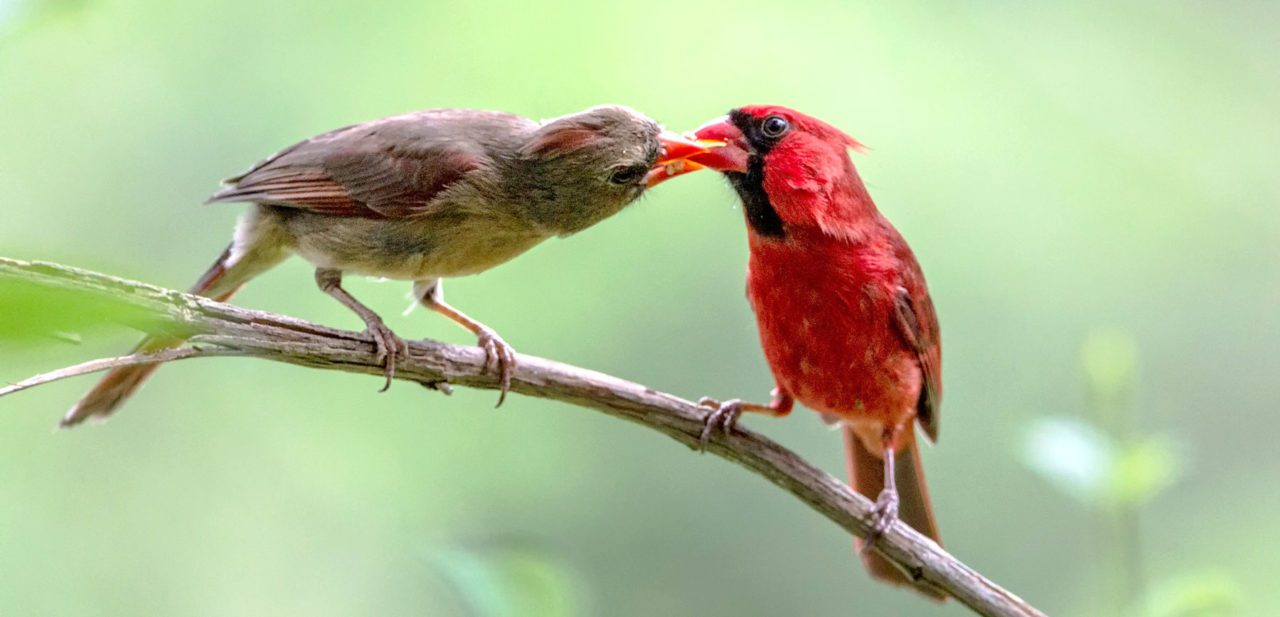
Northern Cardinal
A male Northern Cardinal expresses interest in a female with body and song, including a lopsided display in which he twists his body to better display his chest, and a song-flight display in which a short flight concludes with his singing and fluttering toward the female.
If those moves don’t scare her away, the next phase in cardinal courtship is an exchange of food from male to female. To get a male’s attention, the female cardinal sometimes mimics the begging behavior of a fledgling with quivering wings. In other cases, the female simply reaches toward the male in an attempt to grab a morsel he has clutched in his bill. Copulation often follows close on the heels of a food exchange—with the female presumably choosing to allow a male to mate with her if she is satisfied with the food offering. Since both male and female raise the young, this behavior may signal to the female that a male will be able to keep up his end of the chick-rearing bargain.
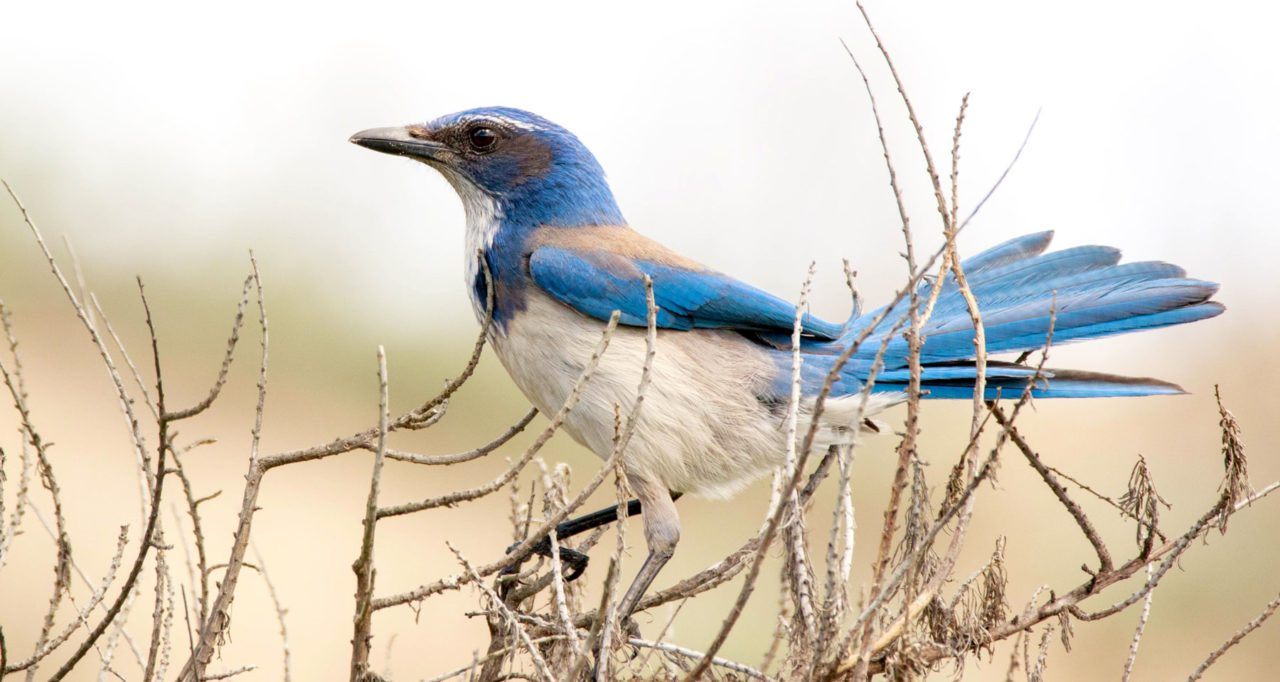
California Scrub-Jay
They might not have all the dance moves of their distant cousins the birds-of-paradise, but male California Scrub-Jays don’t shy away from strutting their stuff during mating season.
A male scrub-jay proclaims his interest in a female by fanning his tail, spreading his wings, and directing some head-jerks at his intended. He takes a few steps away from her, and then toward her, and finishes with a subtle sotto voce serenade. The female sometimes joins in the dancing, and if the rhythm is right, copulation soon follows. The related Florida Scrub-Jay’s moves are even bolder: After hopping in an arc around the object of his desire, a male will sometimes gently nibble her toe.
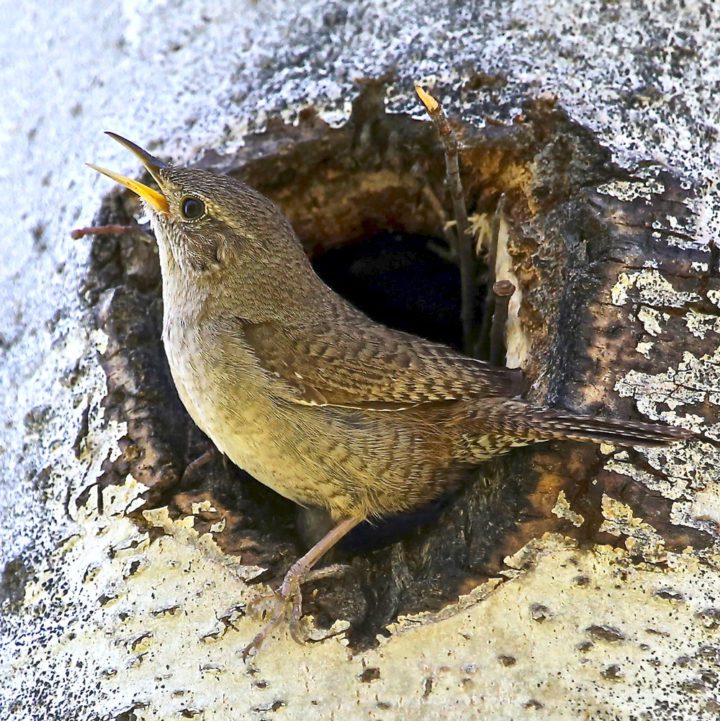
House Wren
House Wrens that breed in North America don’t usually maintain pair bonds from year to year—so new bonds often need to be established when the birds return on migration to their breeding range.
House Wren courtship hinges on the female’s assessment of the male’s house and surrounding property, rather than his wooing her with dinner or dancing. When a female arrives on a male’s territory, he often leads the female directly to his nest cavity—one of several on a given territory that he may furnish with sticks, providing a foundation for additional construction by the female. The female thoroughly evaluates one or more cavities, entering and exiting multiple times and inspecting the immediate surroundings. If one nest cavity is to her satisfaction, she will begin construction, thus confirming their bond for at least the coming breeding cycle.
Red-tailed Hawk
Among the first bird species to breed across the United States and Canada each year, Red-tailed Hawks are not shy about expressing their attraction for all the world to see.
Red-tails maintain their pair bonds throughout the year, but in late winter and early spring, the partnership needs a warm-up. To reinforce the bond, a male and female soar in wide circles at high altitudes, with the male often diving and ascending steeply while circling. After several series of dives and ascents, the male slowly approaches the soaring female from above, extends his legs, and touches or grasps her momentarily. Sometimes the couple grasps one another’s beaks, or interlocks talons and spirals toward the ground, usually pulling away while still in the air (though one researcher reported a pair of enraptured raptors plunging all the way to the ground before both flying away, apparently unscathed). Piercing screams, raspy murmurs, and food exchange often accompany the displays.
Mourning Dove
Mourning Doves have several ways of showing each other they care. Allopreening, or mutual preening, consists of birds gently nibbling each other’s head and neck feathers. The male may then engage in ritual preening, in which he stretches over his shoulder, digs into his feathers, and moves his bill rapidly along his neck and breast. Finally, a signal that copulation is imminent: The male offers an open bill to the female, she inserts her beak into his, and they briefly pump heads up and down—a dove’s take on something we might describe as a lover’s kiss.
Add Your Courtship Notes to eBird
Keeping track of the different levels of courtship and nesting behavior you see on your bird walks will make you a keener observer, and can also help larger science efforts. If you use eBird, the worldwide database of over 750 million bird sightings, you can add breeding codes right into your checklists.
Breeding codes are a simple system of categories that indicate any confirmed or suspected breeding activity you notice. For example, seeing a nest with young (breeding code NY), or an adult feeding young (FY), indicates confirmed breeding evidence. Witnessing a courtship feeding or display (C), or a bird building a nest (B), denote probable breeding activity. A less specific observation, such as hearing a male singing in the right habitat at the right time of year (S), indicates a possible breeder.
These breeding codes are of use to Breeding Bird Atlases—multiyear surveys that attempt to find all of the breeding birds in a state. As of 2020, several such atlases are underway in Virginia, Maine, Maryland, the District of Columbia, and New York. If you’re in any of these areas, and you hear at least one bird singing this year, you could be a part of these valuable efforts.

All About Birds
is a free resource
Available for everyone,
funded by donors like you
American Kestrel by Blair Dudeck / Macaulay Library
